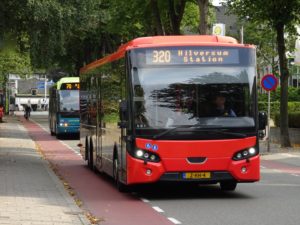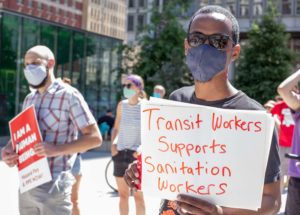We need a project of public reconstruction to tackle the profound crises we face. Such a project can offer a path out of crisis and build a new vision for our society.
What is a “Public Good”?

Public goods are services and resources that are in the interests of all and are under public or community control to ensure that they are shared fairly and protected.
Schools. Water. Homes. Hospitals and clinics. Trains and buses. Prescription drugs. Food. Internet. Fire stations. These are some of the things we all need for a good, secure life.
But many of these are not protected as public goods. They are in private hands and bought or sold for profit. This deprives many of us of the things we need. It also feeds concentrated economic power and racial domination.
As K. Sabeel Rahman, Director of Demos, explains, “Public goods are not so much about ‘free stuff’ as they are about the ‘stuff that makes us free.’” This is why fights for public goods hold the keys to a just, democratic future.
Why “Reconstruction”?
Our country has had two reconstructions, the First Reconstruction after the Civil War and the Second Reconstruction of the Civil Rights Movement. In both periods, people worked to build the country anew in the hope of achieving racial justice, democracy, and a fair distribution of goods.
The crises we face now demand another reconstruction — a Public Reconstruction.

The concept of Public Reconstruction contains three core ideas.
First
We must reconstruct our country by turning the things we need to thrive into public goods. This was true before COVID. It is even more apparent now.
Second
To win these public goods, we must work together across race, geography, and interests. There are many fights now happening for public goods. Indigenous-led struggles over water rights. Labor bargaining for the common good. Fights for public transit and child care. But a broad public constituency for these public goods does not yet exist. By uniting our fights under a shared framework, we can construct this public as we campaign for change.
Third
Our reconstructed institutions and programs must be accountable to this new public. People long excluded based on race, money, language, etc. must be in the driver’s seat. This is how we will make our new programs and institutions democratic and well-functioning for the benefit of all of us.
Our approach
To win a robust agenda of democratically controlled public goods, we must create a broad constituency that will fight for that agenda. Effective, strategic organizing is essential for pushing the best policy ideas to victory.
We work with community organizations, labor unions, racial justice organizations, and other groups to:
- Sharpen campaign strategy
- Identify constituencies that have a shared stake in a particular public good
- Develop messaging, framing, and narrative that supports campaigns and projects a long-term vision
Public Reconstruction is a project of the Alliance for a Just Society and Professor Daniel HoSang of Yale University.